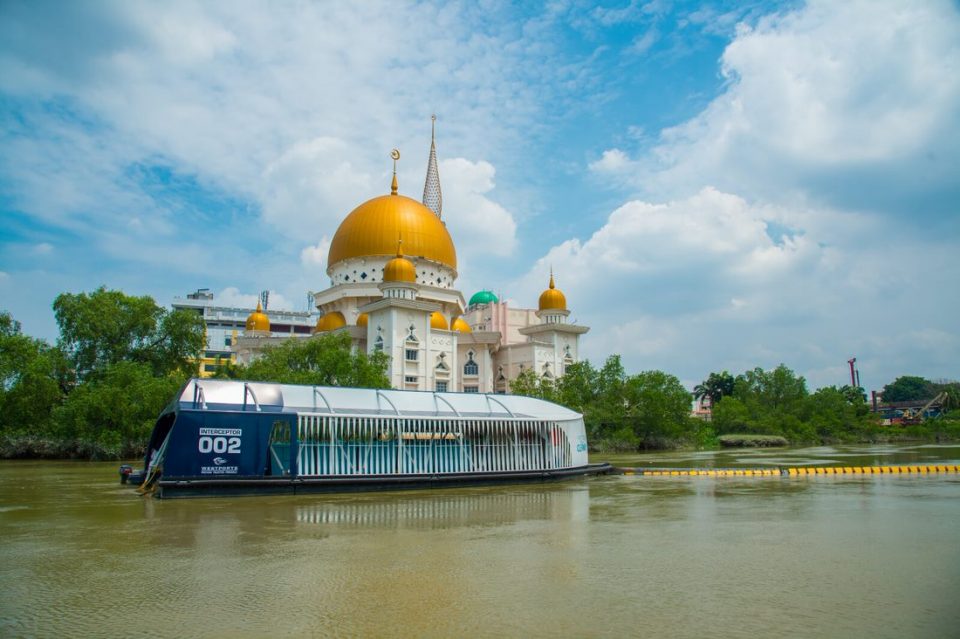By Ida Nadirah Ibrahim
THE Klang River, which stretches across 122 kilometres and intersects seven constituencies in two states, has over the years gained a reputation for being polluted.
Since 2016, the Selangor government has taken the initiative to extract waste from the river.
In a cleanup project overseen by the Selangor Maritime Gateway (SMG) that spanned four years, over 67,000 metric tonnes (MT) of floating debris was trapped and removed.
The project, carried out by Landasan Lumayan Sdn Bhd (LLSB), saw the monthly extraction average of river waste reduced from 1,5000 MT to 900 MT. This also resulted in an improvement in the river’s Water Quality Index in 2020.
In conjunction with World Environment Day 2021 on June 6, themed ‘Ecosystem Restoration’, LLSB shares with Selangor Journal the latest updates on the Klang River cleanup.
LLSB managing director Syaiful Azmen Nordin said under Phase 1 of the SMG (2018 – 2022), the company had targeted 30 per cent of waste to be extracted from the river. Currently, the figure stands at 27 per cent.
“This means we are on track to achieving our goal. Under Phase 2 (2023 onwards) we are targeting a 40 per cent reduction.
“However, the extraction volume, which is reducing, will at some point start to plateau unless there is a drastic shift in people’s What it takes to guard and grow a river mindset about river protection,” Syaiful told Selangor Journal in an email interview.
Although last year’s movement control order (MCO) led to a significant drop in the amount of rubbish being thrown into the Klang River, Syaiful said the current MCO will not bring about the same result as the first MCO had a tighter restriction on movements and in the operation of businesses.
“Yes, there was a significant dip in the volume of waste we extracted during the first month of MCO 1.0. However, we also recognise that we cannot shut down our economy in order to achieve a near-zero waste volume in our rivers. What we need are stronger and more consistent penalties against polluters and a higher consciousness amongst people about river guardianship,” he said.
The value of trash
In its bid to go beyond extracting waste from the Klang River, LLSB has launched a challenge, the ‘SMG Innovation Challenge: Upcycling River Waste To Wealth’, on May 19, in collaboration with the Malaysian Global Innovation & Creativity Centre (MaGIC).
Syaiful said the challenge was initiated to spur the community to use green innovation to convert river waste into functional sustainable products with commercial value.
“One of our mandates is to turn what we now register as waste into resources in line with the Selangor government’s green technology and waste recovery agenda.
“At present, all the waste retrieved from the river (like municipality waste) is sent to landfills, without attempts to recover its value. As such, over the last five years, 67,000 MT of waste from the Klang River ended up in landfills,” he said, adding that the programme is also supported by the Selangor’s municipality waste management provider, KDEB Waste Management Sdn Bhd, Dutch NGO, The Ocean Cleanup (the innovator of the Interceptor) and Selangor Information Technology & Digital Economy Corporation (Sidec). Those interested to know more about the challenge can visit www.selangormaritimegateway.com/innovation-challenge-2. The closing date for applications is June 23.
Back to nature
Aside from the river clean-up and embarking on turning waste into profit, LLSB is also tasked to clean and rejuvenate 56km of the Klang River from Mid Valley in Kuala Lumpur to the river mouth at Port Klang.
Syaiful explained that the project’s objective is to not treat river cleaning as a sustainable business but to look into the growth of rejuvenation activities for the river and bring people closer to nature.
Through the recognition of Klang River as an economic driver, Syaiful said the state government had focused on three key pillars, namely river cleaning, river rehabilitation, and riverfront development. He said this is combined with the development of eco-tourism and the idea of sustainable living and is projected to complete by 2030, in line with the Smart Selangor vision.
Several projects have been identified to kickstart the initiative, such as giving the historical Pangkalan Batu Jetty a facelift, introducing the SMG River Taxi service and creating Malaysia’s first biophilic nature park at Mangrove Point.
A collective effort
Syaiful said the biggest challenge now is to change how society views rivers. Industries need to stop dumping waste into our waterways — be it drains, monsoon drains, tributaries, or rivers.
He said the government must also tighten surveillance and implement stronger enforcement, such as what is being done by Selangor.
“People are generally complacent until the water in their taps is cut off. Then they blame the authorities. People need to start realising that 90 per cent of our water comes from rivers. Until every single person and business is mindful of this, we will never completely resolve our water issues.”
This article first appeared in the Selangor Journal monthly June edition (e-paper), published on May 31, 2021.





